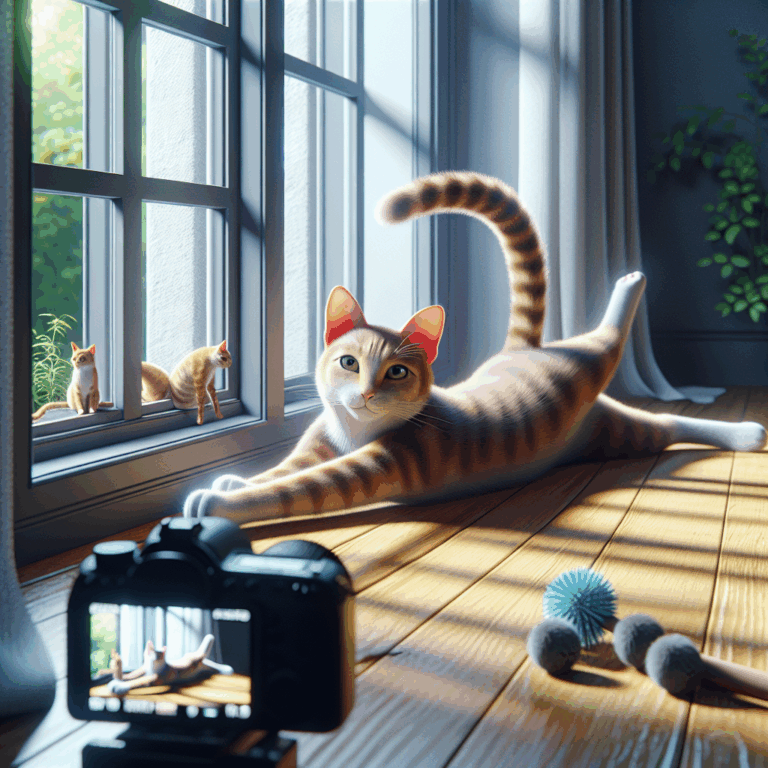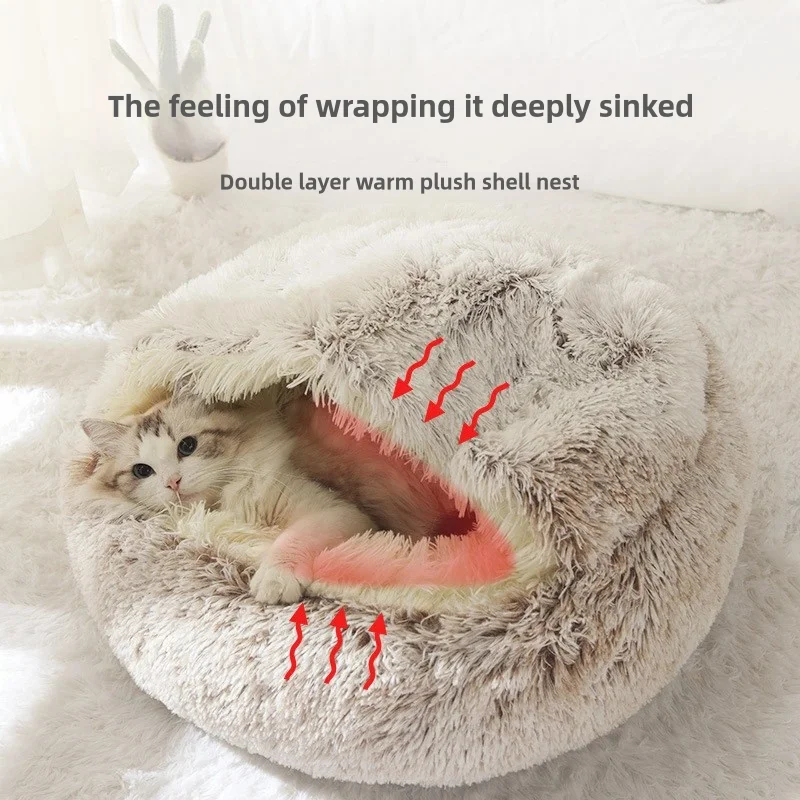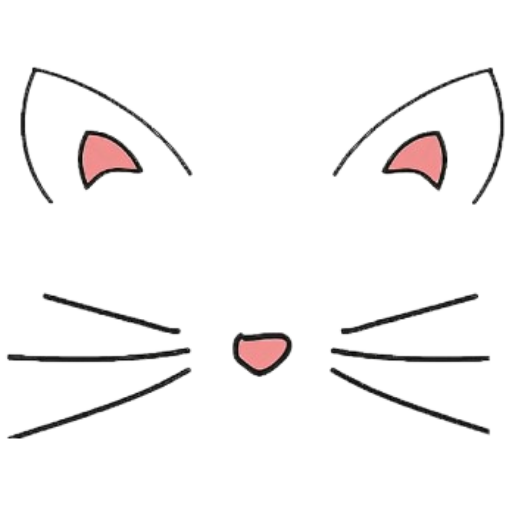Feline Fitness: How Cats Keep Active and the Role of Play in Their Health
- 6 Comments
In the world of our furry companions, maintaining an optimal level of physical fitness is as crucial as it is for humans. Cats, known for their grace and agility, have evolved to be both stealthy predators and playful creatures. This dual nature has a significant impact on their health and well-being, making it essential for cat owners to understand the importance of exercise and play in their pets’ daily routine.
Cats are natural athletes, with a physique that supports high-speed sprints and agile jumps. Their muscular bodies are designed for quick bursts of energy, which is why you often see them suddenly darting across the room or scaling furniture with ease. This innate need for activity is a remnant of their wild ancestors who relied on hunting for survival. In the modern-day household, without the need to hunt for food, play becomes the primary outlet for a cat’s energy.
Engaging in regular playtime is not only beneficial for a cat’s physical health but also for their mental stimulation. Interactive toys, such as feather wands, laser pointers, and puzzle feeders, mimic the movements of prey and satisfy a cat’s instinctual hunting behavior. These activities help prevent obesity, a common health issue in domestic cats, by ensuring they burn off excess calories. Moreover, play can also reduce stress, improve socialization, and strengthen the bond between pet and owner.
A study conducted by the University of California revealed that domestic cats that engage in daily play exhibit fewer behavioral problems. The research suggests that the lack of adequate physical activity can lead to issues such as aggression, depression, and destructive behaviors. By incorporating play into their routine, cat owners can help mitigate these problems, leading to happier and healthier pets.
Beyond structured play sessions, creating an environment that encourages spontaneous activity is equally important. Cat trees, climbing shelves, and scratching posts provide opportunities for natural exercise and exploration. These installations can stimulate a cat’s curiosity and encourage physical exertion through climbing and scratching, which are natural behaviors for maintaining their claws and muscles.
The role of play in a cat’s life cannot be overstated. It is a crucial aspect of their overall well-being, impacting both their physical and mental health. Owners should strive to dedicate time each day to engage their feline friends in activities that challenge and entertain them. As with any fitness regime, variety is key. Rotating toys and introducing new forms of play can keep things interesting and prevent boredom.
In conclusion, understanding the significance of feline fitness and the role of play can transform the lives of domestic cats and their human companions. By fostering an active lifestyle, we can ensure our beloved pets lead fulfilling, healthy lives. So, the next time your cat bats a paw at a dangling string or chases after a toy mouse, remember that it’s not just play—it’s an essential part of keeping them fit, happy, and healthy.

In the world of our furry companions, maintaining an optimal level of physical fitness is as crucial as it is for humans. Cats, known for their grace and agility, have evolved to be both stealthy predators and playful creatures. This dual nature has a significant impact on their health and well-being, making it essential for cat owners to understand the importance of exercise and play in their pets’ daily routine.
Cats are natural athletes, with a physique that supports high-speed sprints and agile jumps. Their muscular bodies are designed for quick bursts of energy, which is why you often see them suddenly darting across the room or scaling furniture with ease. This innate need for activity is a remnant of their wild ancestors who relied on hunting for survival. In the modern-day household, without the need to hunt for food, play becomes the primary outlet for a cat’s energy.
Engaging in regular playtime is not only beneficial for a cat’s physical health but also for their mental stimulation. Interactive toys, such as feather wands, laser pointers, and puzzle feeders, mimic the movements of prey and satisfy a cat’s instinctual hunting behavior. These activities help prevent obesity, a common health issue in domestic cats, by ensuring they burn off excess calories. Moreover, play can also reduce stress, improve socialization, and strengthen the bond between pet and owner.
A study conducted by the University of California revealed that domestic cats that engage in daily play exhibit fewer behavioral problems. The research suggests that the lack of adequate physical activity can lead to issues such as aggression, depression, and destructive behaviors. By incorporating play into their routine, cat owners can help mitigate these problems, leading to happier and healthier pets.
Beyond structured play sessions, creating an environment that encourages spontaneous activity is equally important. Cat trees, climbing shelves, and scratching posts provide opportunities for natural exercise and exploration. These installations can stimulate a cat’s curiosity and encourage physical exertion through climbing and scratching, which are natural behaviors for maintaining their claws and muscles.
The role of play in a cat’s life cannot be overstated. It is a crucial aspect of their overall well-being, impacting both their physical and mental health. Owners should strive to dedicate time each day to engage their feline friends in activities that challenge and entertain them. As with any fitness regime, variety is key. Rotating toys and introducing new forms of play can keep things interesting and prevent boredom.
In conclusion, understanding the significance of feline fitness and the role of play can transform the lives of domestic cats and their human companions. By fostering an active lifestyle, we can ensure our beloved pets lead fulfilling, healthy lives. So, the next time your cat bats a paw at a dangling string or chases after a toy mouse, remember that it’s not just play—it’s an essential part of keeping them fit, happy, and healthy.



6 thoughts on “Feline Fitness: How Cats Keep Active and the Role of Play in Their Health”
While the post highlights important aspects of feline fitness, it oversimplifies the complexity of cat behavior and the diverse needs of individual pets.
Thank you for sharing your thoughts! The article indeed provides a broad overview, and you’re right that each cat has unique behavioral traits and needs. It’s always beneficial for pet owners to consider their individual cat’s preferences and personality when incorporating play and fitness into their routine.
While the article covers general principles, it overlooks the nuances of individual cat behavior. A more personalized approach would significantly enhance its applicability. Understanding each cat’s unique needs, rather than relying on broad strokes, is crucial for effective fitness routines.
This insightful article highlights the importance of play in maintaining cats’ well-being and happiness.
Thank you for sharing your thoughts on the article. It’s great to see attention being given to understanding the role of play in cats’ lives. The article provides valuable information on how playtime can contribute to both physical and mental health for our feline companions. It emphasizes the benefits of engaging activities and how they can help prevent common issues like obesity and behavioral problems. Creating an environment that encourages natural behaviors and incorporating variety in play can indeed be beneficial for cats’ overall well-being.
This informative post highlights the importance of keeping our feline friends active and engaged for their overall health.